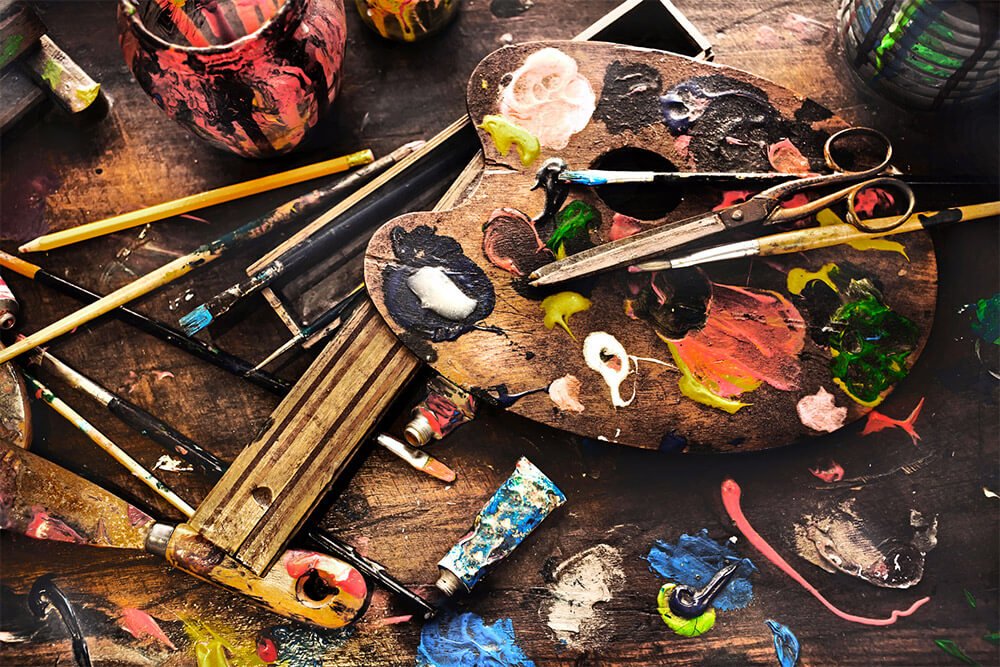When painting with the best oil paints you are granted the flexibility to modify your work for days to come as oil paint takes longer to dry than other types of paint. Being able to modify your work is one of the reasons why oil paint is preferred among quite a few artists. Although being able to alter your piece is a great advantage to using oil paints, the slow drying time of oil paint makes it a tad aggravating especially if you have to transport your work sooner than later.
You know that idiom, “like watching paint dry”? It’s probably referring to oil paint.
After creating a painting with watercolors or acrylics the paint dries by evaporation. The water in the paint leaves the artwork and the paint hardens. This process cannot happen with oil paint specifically because there is no water to vaporize.
By contrast, oil paint dries by way of oxidation which is a much slower progression of drying.
For example, when you cut an avocado in half the flesh begins to turn brown due to oxidation. The paint on your artwork won’t turn brown, but oxidation will cause the paint to very slowly harden.
But here is the good news:
There are ways to adjust the paint to dry quicker through numerous procedures and products. One of the most important things to remember in terms of oil paint drying faster is that it’s in reference to “touch dry” since oil paint takes months to completely dry.
Let’s jump right in:
Table of Contents
Drying mediums
Drying mediums can speed up the drying process for oil paints, but you should investigate which drying medium will work best for your piece. Drying mediums can be harmful so it is very important to be careful while using them. Liquin is one of the more popular mediums to use and only a small amount is necessary to mix in for a quickly dried piece.

Thin Layers
Instead of thick brush strokes use thin washes or layers. Working in layers will reduce the drying time of your work. The thick over thin rule is especially important here since the thin layers will be the first to dry.
Nature At Work
Once your artwork is completed, place it in a well-ventilated room with a fan, or open the windows. A great tip is to put the “back” of the artwork toward the window so direct sunlight doesn’t overheat your artwork. Also, adding a humidifier into the room would be a great idea to remove any unwanted moisture from the air.
Beware:
Make sure the room is free of dust or other particles that could stick to your drying art. You wouldn’t want to come in the next morning and see random particles attached to your piece.
Flat Surfaces
When painting on a flat surface the oil paint will be equally spread as opposed to a textured surface where the paint will be disbursed differently and will dry at uneven times.
Use An Acrylic Paint Background
Although you would like to ultimately use oil paints for your work, you can use a quick drying acrylic paint to paint the background then use oil paint over it.

Colors
Certain colors dry faster than others. Colors in the red/orange spectrum dry very slowly. Choose colors for your artwork that you know will have a quicker drying time.
There are other unconventional methods that people use to attempt a faster drying time for their work. Things like using a blow dryer, putting your artwork in an oven, and even spraying a painting with hairspray.
While adventurous, these approaches are not entirely proper in the oil painting world.
If you would like your painting to dry overnight stick with the above mentioned techniques that will speed up your drying time. This thread on wetcanvas.com provides insight from users on quick dry techniques for painting with oils.
Remember…
Oil paint takes months to fully dry. Even if the paint is dry “to touch” it is not entirely dry as a whole so be careful!